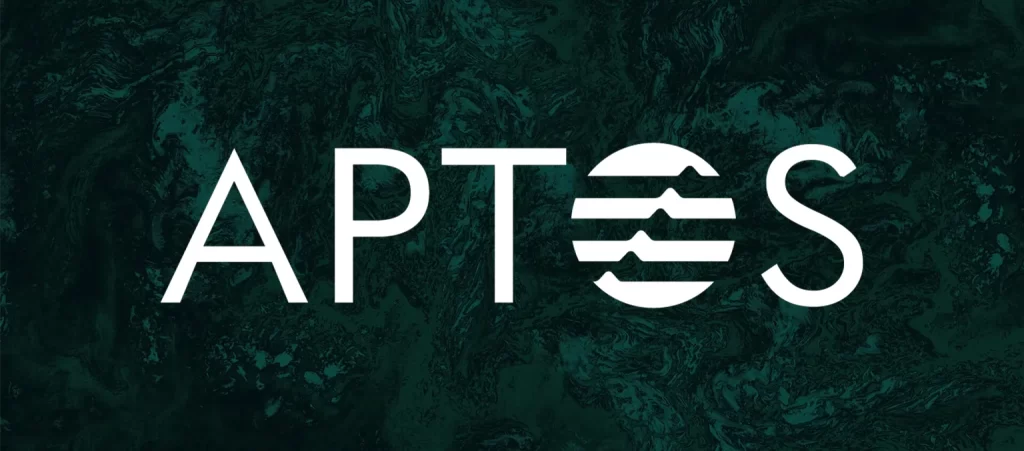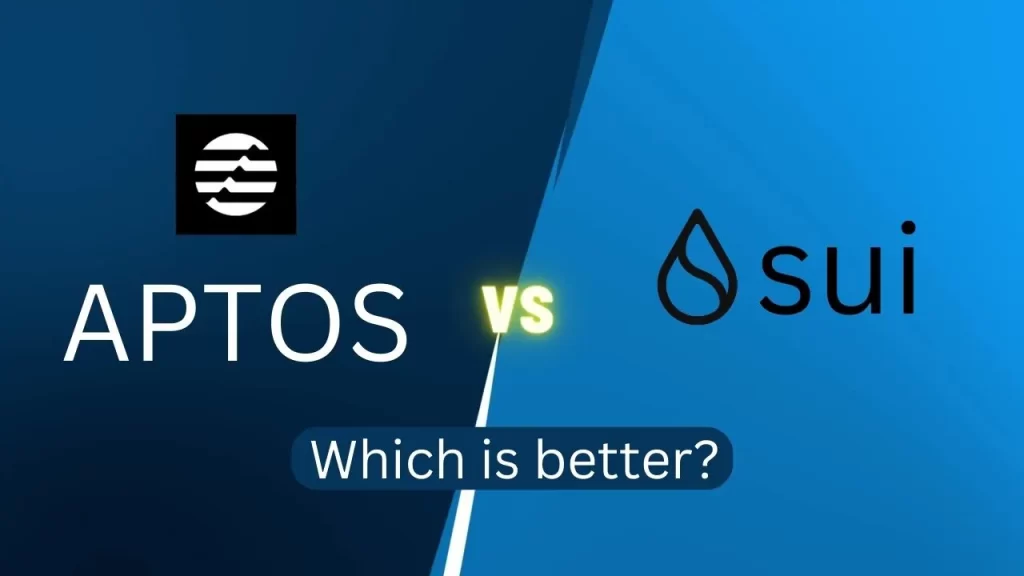Cryptocurrencies have evolved significantly over the years, and with the rise of decentralized applications (DApps) and blockchain-based solutions, the importance of Layer 1 protocols has become increasingly apparent. Layer 1, often referred to as the underlying blockchain layer, forms the foundation for the entire crypto ecosystem. As the market continues to expand, the choice of a Layer 1 protocol becomes crucial, and two promising contenders in this space are Sui and Aptos. In this article, we will delve into the future of Layer 1 crypto by exploring the key features, capabilities, and potential of Sui and Aptos, and examine who will be more successful in the long run and replace Layer 1 current solutions.
Table of Contents
ToggleIntroduction
Layer 1 cryptocurrencies serve as the backbone of blockchain networks, enabling secure and decentralized transactions. These protocols differ from Layer 2 solutions, such as payment channels or sidechains, as they operate independently and have their own consensus mechanisms. Layer 1 protocols play a crucial role in defining the performance, scalability, security, and governance of a blockchain network. Therefore, choosing the right Layer 1 protocol is of utmost importance for developers, enterprises, and investors.
Understanding Layer 1 Cryptocurrencies
Layer 1 cryptocurrencies are the primary building blocks of
the blockchain ecosystem. They establish the fundamental infrastructure on
which various applications and smart contracts can be developed. These protocols
handle tasks such as transaction validation, consensus mechanisms, and
security. Some well-known Layer 1 protocols include Ethereum, Bitcoin, and
Polkadot, each with its own set of features, capabilities, and limitations.

Introducing Sui and Aptos
Sui is an innovative Layer 1 protocol that aims to address the scalability challenges faced by many blockchain networks. It introduces a unique sharding mechanism that allows for horizontal scalability, enabling increased throughput and transaction speeds. Sui also emphasizes security by utilizing a robust consensus algorithm and incorporating advanced cryptographic techniques. With its focus on scalability and security, Sui has garnered attention from developers and investors alike.
On the other hand, Aptos is a Layer 1 protocol that emphasizes interoperability and cross-chain capabilities. It aims to create a seamless ecosystem where different blockchain networks can interact and share data securely. Aptos employs a modular architecture that enables easy integration with existing blockchains, facilitating the exchange of assets and information across networks. Its focus on interoperability positions Aptos as a potential game-changer in the blockchain industry.
Evaluating Sui

When assessing the potential of Sui, several key factors come into play. Firstly, its technology and scalability solutions set it apart. Sui utilizes sharding to split the network into smaller partitions, known as shards, enabling the concurrent handling of transactions. This approach significantly enhances scalability and increases the network’s capacity to handle a higher transaction volume.
Secondly, Sui’s consensus mechanism and security measures contribute to its credibility. It utilizes a secure and efficient consensus algorithm that ensures the integrity and immutability of transactions. Additionally, Sui implements cutting-edge cryptographic techniques to safeguard user data and protect against potential attacks.
Furthermore, Sui’s developer community and ecosystem play a crucial role in its growth and adoption. A thriving community of developers fosters innovation and contributes to the expansion of the protocol. Sui’s ecosystem encompasses various decentralized applications and services that leverage its scalability features, creating a vibrant and dynamic environment for developers and users.
Lastly, examining Sui’s real-world use cases and adoption provides insights into its practical applicability. The protocol’s scalability solutions make it suitable for applications that require high throughput, such as decentralized finance (DeFi), gaming, and supply chain management. By addressing the scalability bottleneck, Sui opens up new possibilities for widespread adoption in these industries and beyond.
Analyzing Aptos

Aptos distinguishes itself with its technical features, governance model, and interoperability. Its technical design focuses on performance optimization, ensuring fast and efficient transaction processing. Aptos achieves this through a combination of consensus algorithms, smart contract functionality, and optimized network architecture.
In terms of governance, Aptos adopts a decentralized model that empowers token holders to participate in decision-making processes. This approach ensures a fair and inclusive ecosystem where stakeholders have a say in the protocol’s future development and evolution. The governance framework promotes transparency and reduces the concentration of power, aligning with the principles of decentralization.
Interoperability is another key aspect of Aptos’ appeal. By enabling seamless communication and data exchange between different blockchain networks, Aptos enhances the overall usability and efficiency of the decentralized ecosystem. This interoperability opens up avenues for cross-chain applications, asset transfers, and collaborative efforts among various projects, fostering synergy and driving innovation.
Moreover, Aptos showcases its potential impact through a wide range of applications. From cross-chain decentralized exchanges to decentralized identity solutions, Aptos aims to revolutionize industries and provide efficient and secure decentralized alternatives. Its flexibility and compatibility with existing blockchain networks make it a compelling choice for developers and enterprises seeking to leverage the benefits of interoperability.
Comparing Sui and Aptos
Both Sui and Aptos offer unique features and capabilities that position them as potential leaders in the Layer 1 crypto space. When comparing the two protocols, several factors come into play.
In terms of performance and scalability, Sui’s sharding mechanism provides a notable advantage, allowing for increased transaction throughput. On the other hand, Aptos focuses on performance optimization through its network architecture and consensus algorithms, ensuring fast and efficient transaction processing.
Governance and decentralization are also important considerations. Sui emphasizes security and immutability through its consensus algorithm, while Aptos empowers token holders with governance rights, ensuring a decentralized decision-making process.
When it comes to interoperability and ecosystem support, Aptos takes the lead. Its modular architecture and cross-chain capabilities enable seamless integration with existing blockchain networks, fostering collaboration and data exchange. Sui, on the other hand, focuses more on its scalability features and the development of a robust ecosystem around its protocol.
Developer support and community engagement are vital for the long-term success of any Layer 1 protocol. Sui has attracted a growing community of developers who are enthusiastic about its scalability solutions. The active developer community contributes to the continuous improvement and expansion of the protocol’s capabilities. Aptos, with its emphasis on interoperability and cross-chain applications, has also garnered attention from developers seeking to build innovative solutions that span multiple blockchain networks.
Ultimately, the success of a Layer 1 protocol depends on its ability to meet the evolving needs of the blockchain industry and its potential for widespread adoption. Both Sui and Aptos bring unique strengths to the table, addressing different aspects of scalability, security, governance, and interoperability.
The Future of Layer 1 Crypto
The future of Layer 1 cryptocurrencies is filled with opportunities and challenges. As the blockchain ecosystem continues to grow and evolve, scalability remains a significant concern. Layer 1 protocols that can provide high transaction throughput and scalability solutions will be well-positioned to meet the demands of emerging applications, such as decentralized finance, non-fungible tokens, and supply chain management.
Interoperability is another critical aspect that will shape the future of Layer 1 crypto. The ability to seamlessly connect different blockchain networks and facilitate the exchange of assets and data will drive innovation and foster collaboration among various projects. Layer 1 protocols like Aptos, with their cross-chain capabilities, are poised to play a pivotal role in realizing the vision of a connected and interoperable blockchain ecosystem.
Furthermore, the long-term success of Layer 1 protocols will be influenced by factors such as security, governance, developer support, and real-world adoption. Protocols that prioritize robust security measures, decentralized governance models, and vibrant developer communities will be better equipped to navigate the challenges and seize the opportunities that lie ahead.
In conclusion, the future of Layer 1 crypto is promising, with protocols like Sui and Aptos pushing the boundaries of scalability, security, and interoperability. As the industry evolves, the choice of a Layer 1 protocol becomes increasingly crucial. Developers, enterprises, and investors should carefully consider the unique features, capabilities, and potential of different Layer 1 protocols to make informed decisions that align with their specific needs and objectives.
FAQs
- What is the role of Layer 1 in the crypto ecosystem? Layer 1 protocols form the underlying blockchain layer and provide the foundation for decentralized applications, transaction processing, and consensus mechanisms. They define the performance, scalability, security, and governance of the entire crypto ecosystem.
- How does Sui aim to solve scalability issues? Sui addresses scalability challenges by implementing a sharding mechanism that enables parallel processing of transactions. This allows for increased throughput and faster transaction speeds, enhancing the scalability of the protocol.
- Can Aptos interact with other blockchain networks? Yes, Aptos emphasizes interoperability and cross-chain capabilities. It enables seamless communication and data exchange between different blockchain networks, allowing for collaboration, asset transfers, and cross-chain applications.
- What are the main considerations when choosing a Layer 1 protocol? When choosing a Layer 1 protocol, it is essential to consider factors such as scalability, security, governance model, developer support, and real-world adoption. Assessing these aspects ensures that the chosen protocol aligns with specific requirements and objectives.
- Are there any Layer 1 protocols with both scalability and security? Yes, several Layer 1 protocols aim to address both scalability and security. Sui, for example, combines a sharding mechanism
